Autism through the years: Does it go away with age?
Autism is a word that often invokes a vast number of emotions in the hearts of parents and caregivers who hear it in connection with a loved one.
The diagnosis can be overwhelming, leading to a quest for understanding what it contains, its nature, causes, prevalence, and, importantly, its course over time.
A burning question that many seek answers to is, “Can autism go away with age?”
Our primary focus with this blog is to address this question thereby guiding you through a comprehensive exploration of autism, from its definition to how a child can evolve with it throughout their lives.
What is Autism?
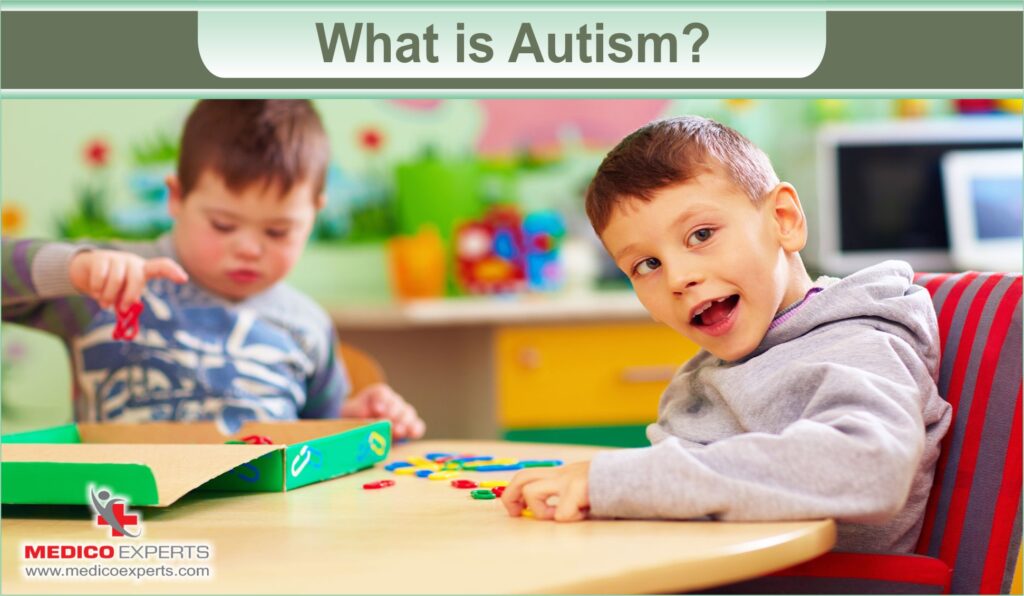
Autism, or Autism Spectrum Disorder (ASD), is a complex neurodevelopmental condition characterized by challenges in social interaction, restricted interests, and repetitive behaviors.
The term spectrum in ASD highlights the wide range of symptoms and skills the child with autism can have. Some may require significant support in daily activities, while others might live independently.
Learn more here
Can autism go away with age?
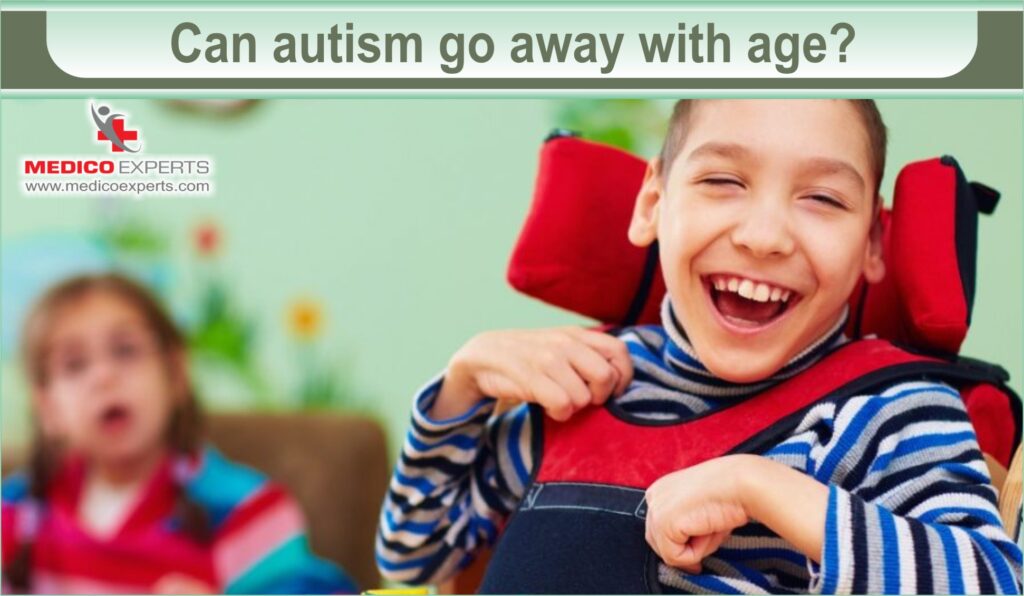
The question of whether autism can “go away” with age is complex and deserves an understanding of the nature of autism as a spectrum.
Autism doesn’t disappear, but how it shows up can change as time goes on. Many children see significant improvements with the right support and interventions.
It is also possible for some to develop coping mechanisms that make managing certain aspects of autism easier.
What are the causes of Autism?
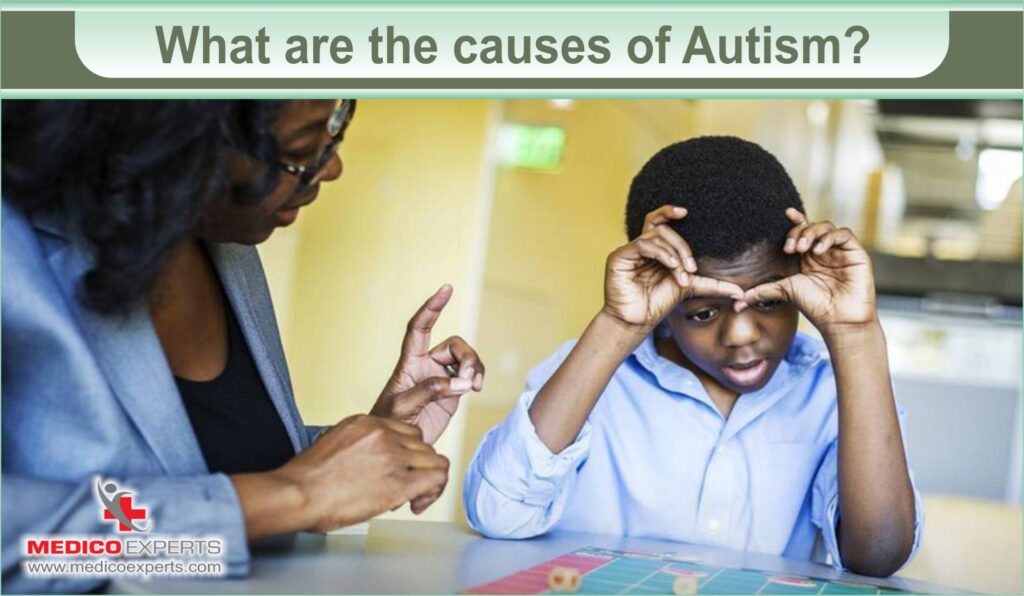
Understanding the causes of autism requires a nuanced exploration of various factors, reflecting the complexity of the condition itself. Here are the main contributors:
Genetic Influences:
Genetics plays a significant role in the development of autism.
Specific gene mutations are often identified in those with autism, and having a family member with autism increases the likelihood of a diagnosis.
Environmental Factors:
Exposure to certain environmental factors during pregnancy can increase the risk of autism.
These may include maternal infections, certain prescription medications, and exposure to pollutants.
Brain Structure and Function:
Studies have found differences in certain areas of the brain that process sensory information and language in individuals with autism.
These structural differences are believed to affect behavior and communication.
Prenatal Conditions:
Complications during pregnancy, including advanced parental age at the time of conception, maternal health issues, and certain prenatal nutritional deficiencies.
They have been associated with a higher likelihood of autism spectrum disorders.
Understanding these causes helps in early diagnosis and tailored intervention plans, ensuring a supportive developmental path for those with autism.
How Common is Autism?
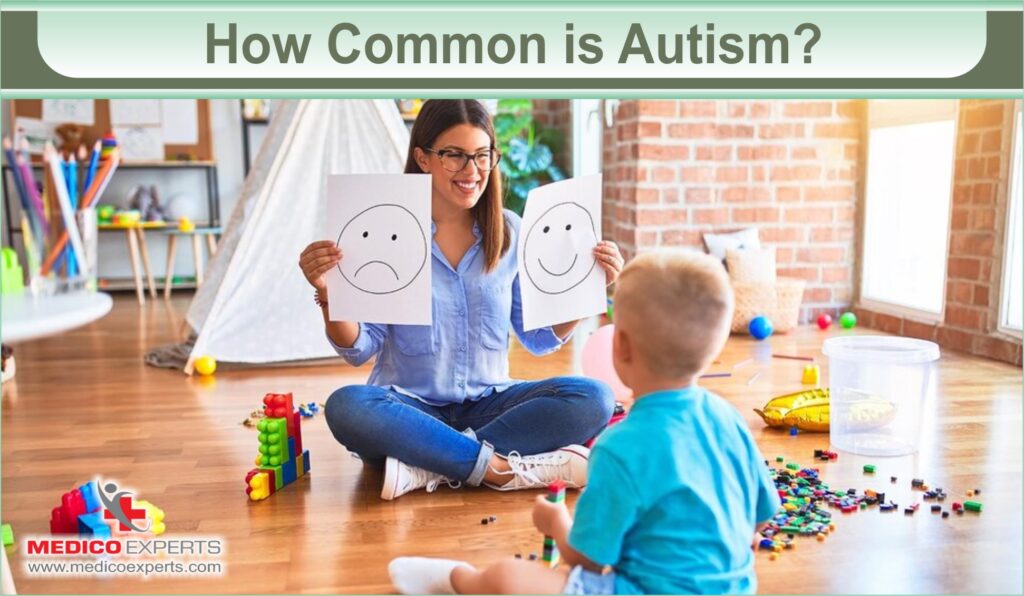
Recent estimates from the Centers for Disease Control and Prevention (CDC) reveal that approximately 1 in 36 children have been diagnosed with autism spectrum disorder (ASD).
This marks a steady increase in the prevalence rates over the past decades highlighting the growing awareness and diagnosis of the condition.
Autism impacts children across various racial, ethnic, and socioeconomic backgrounds, with boys being approximately four times more likely to be affected than girls.
What are the signs of autism in children?
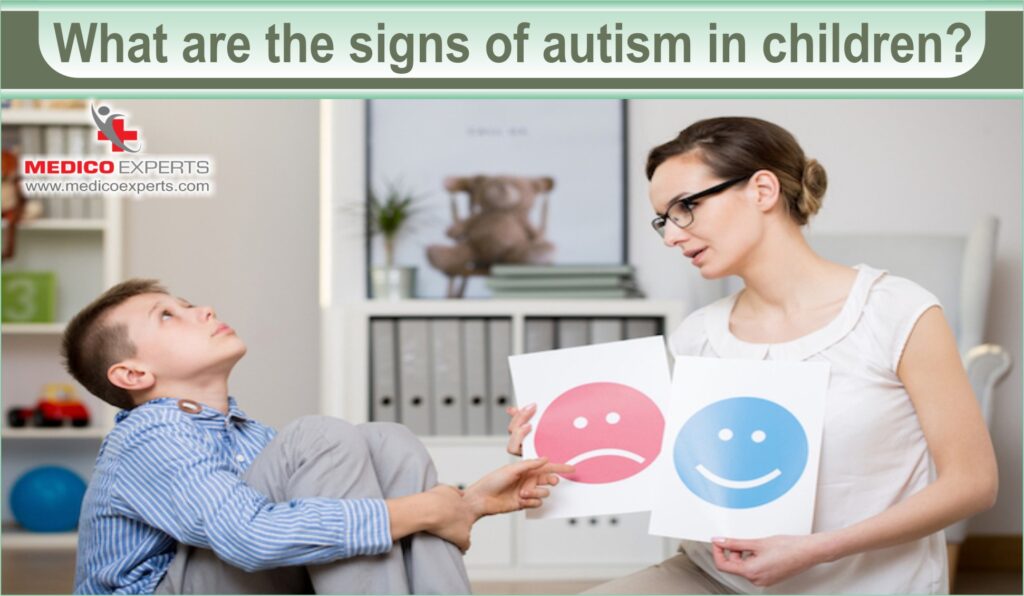
Early recognition of autism can play a crucial role in how effectively it can be managed.
Some of the possible signs of autism in children include:
- Avoids eye contact: Autistic kids might be very shy and look away when talking or being spoken to, a lot or all the time.
- Acts distant: Sometimes, they seem lost in their thoughts and may not respond when someone talks to them.
- Stick to routines: Following a set way of doing things makes them feel safe. Any changes can upset them.
- Struggles with changes: They can handle tasks meant for their age but find it tough to switch activities or try new methods.
- Hard to see others’ point of view: Understanding what others think or feel can be challenging for an autistic child.
- Difficulty in new social settings: They may get upset in new social situations and have trouble understanding social rules and expectations.
- Issues with making and keeping friends: Autistic children find it hard to engage in pretend play, make friends or share interests.
- Repetitive actions: They may repeat actions, activities, movements, or words, like lining up objects repeatedly.
- Focused interests: Autistic children may have few interests but know a lot about them.
- Sensitive or indifferent to sensations: Some might be very sensitive to touch, noise, or other sensations, while others may not react much to sensory changes like extreme temperatures.
Identifying these signs early can lead to earlier intervention which is often key in helping children with autism develop to their full potential.
How is Autism Diagnosed?
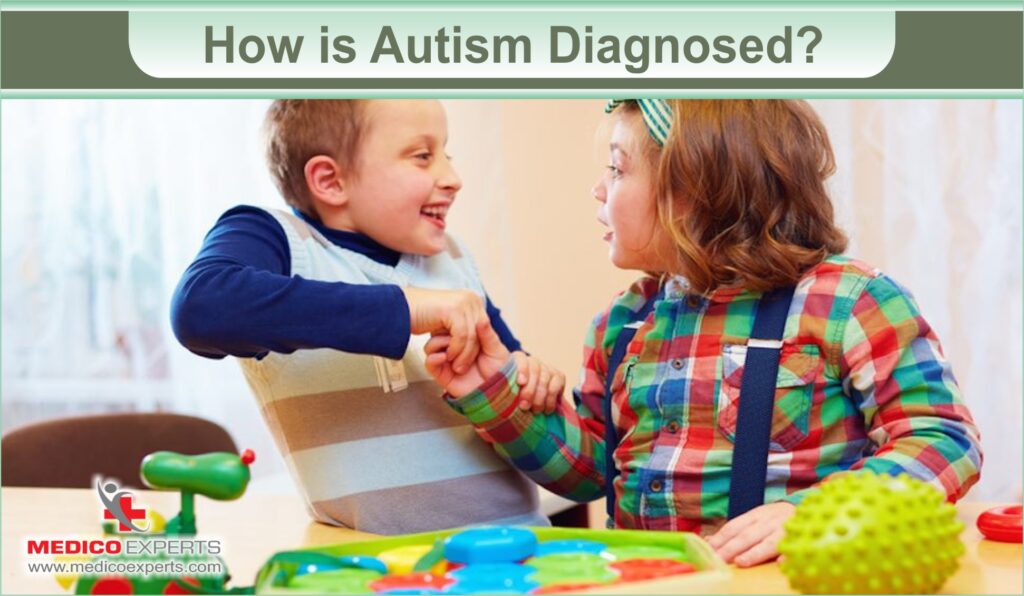
Autism diagnosis doesn’t rely on blood tests, x-rays, or lab exams. Rather, keen observation plays a crucial role in detecting autism. Research indicates that the average age for the first intervention in the U.S. is 4.7 years, as reported by the National Autism Data Center.
More factors are as follows:
- Initial evaluation for autism involves input from parents, teachers, and caregivers to assess a child’s progress in hitting developmental milestones.
- Pediatricians monitor growth during checkups, but your observations are crucial in early autism detection.
- Doctors focus on missed milestones like lack of eye contact or absence of pretend play to identify autism.
- Suspected autism leads to specific diagnostic criteria assessment by a pediatrician or specialist. Criteria for autism spectrum disorder involve social communication deficits, repetitive behaviors, early developmental symptoms, and non-intellectual disability-related disturbances.
What are the Treatment options to improve the Autism Traits over time?
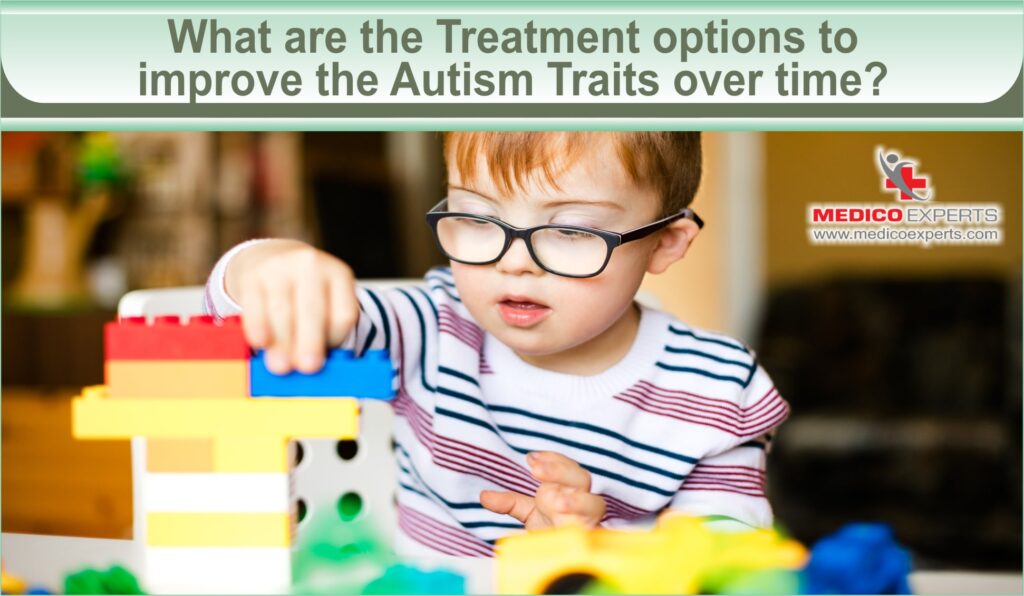
While there is no known cure for autism treatment options can significantly improve children’s traits and functioning over time. Treatment is often tailored to each child’s unique needs and can include a combination of therapies, educational support, and medication.
There are numerous strategies to help reduce symptoms and enhance capabilities for children with Autism Spectrum Disorder (ASD).
Utilizing skills effectively is possible with personalized therapies. Different methods work for different people. Specialized programs have shown good results for many with ASD.
Early diagnosis and interventions specifically in preschool are of greater help to manage symptoms and develop skills in the long run.
Let us see the detailed descriptions for each treatment type:
Behavioral Management Therapy:
Behavioral management therapy focuses on addressing behaviors that challenge children with ASD, aiming to promote positive behaviors and reduce negative ones.
Children who undergo early intensive behavioral therapy demonstrate remarkable and enduring advancements in IQ, language skills, academic performance, adaptive behavior, and certain aspects of social behavior.
Their progress surpasses that of children in control groups, highlighting the significant effectiveness of this approach.
Functional Behavior Therapy:
Functional behavior analysis, also known as functional assessment, plays a vital role in behaviorally-based interventions for addressing undesirable behaviors.
The majority of problematic behaviors fulfill an adaptive function and are reinforced by specific outcomes, like gaining adult attention, obtaining a desired object or experience, or escaping from an unpleasant situation or request.
Early Intervention:
Provides tailored support and services to young children with ASD to enhance developmental outcomes and address specific needs early on.
Educational and School-Based Therapies:
Includes specialized education programs and interventions to support learning and skill development in academic settings.
These can include speech and language therapy, occupational therapy, and social skills training.
Medication Treatment:
Involves the use of medications to manage certain symptoms associated with ASD, such as anxiety or aggression, under medical supervision.
It is essential to note that medication alone is not considered a primary treatment for ASD, and should always be used in combination with other therapies.
Nutritional Therapy:
Focuses on dietary interventions and nutritional plans to support overall health and well-being in individuals with ASD.
Research suggests that certain nutrients or dietary changes may have a positive impact on behaviors and symptoms associated with ASD.
Occupational Therapy:
Aims to enhance independent living skills and improve the functional abilities of children with ASD to participate in daily activities.
Parent-Mediated Therapy:
Parent-mediated therapy involves training and support for parents to implement effective strategies at home to promote their child’s development.
This method provides children with autism spectrum disorder (ASD) with continual reinforcement and training throughout the day.
Additionally, parents can engage in therapies with children who show early signs of autism but have not yet received a diagnosis.
Physical Therapy:
Focuses on improving motor skills, coordination, and mobility in individuals with ASD to enhance physical health.
Social Skills Training:
Provides targeted interventions to improve social interaction, communication, and relationship-building skills in individuals with ASD.
Alternative Therapies:
Include a range of treatments that are not scientifically proven but may be used in conjunction with other therapies to enhance well-being and reduce symptoms.
Options may involve animal-assisted therapy, art therapy, or music therapy.
Speech-Language Therapy:
Addresses speech and language difficulties in children with ASD to improve communication abilities and language development.
For inquiries about treatment consult our healthcare professionals at MedicoExperts to discuss a personalized treatment plan that suits your child’s needs.
Conclusion

While autism is a lifelong condition that does not go away with age, it is important to recognize that children with autism can continue to evolve and improve throughout their lives.
Early recognition, intervention, and support are crucial in helping children with autism reach their full potential. With the right treatment and care, individuals with autism can lead fulfilling and meaningful lives.
So, don’t hesitate to seek professional help if you suspect your child may have autism.
MedicoExperts offers a wide range of services tailored to meet the specific needs of each child.
From diagnostic assessments to advanced therapy options including behavioral,
speech-language, and occupational therapies, the organization is committed to promoting the well-being and development of individuals with autism.
By integrating the latest research and therapeutic techniques, MedicoExpert ensures that every child has the opportunity to achieve their fullest potential.
Frequently Asked Questions (FAQs)
Q. At what age is autism usually identified?
A. Autism can be identified as early as 18 months or younger. By the age of 2, a diagnosis made by a seasoned professional can be deemed highly dependable. However, many children may not receive a final diagnosis until much older.
Q. Can children with autism attend regular schools?
A. Yes, many children with autism can attend regular schools with or without additional support. It depends on the individual’s needs and the availability of special education services to help them succeed.
Q. How can I support my child with autism at home?
A. Supporting a child with autism at home involves creating a structured environment, using visual aids for communication, engaging in regular therapy sessions as recommended, and offering unconditional love and patience.
Q. Is there a genetic test for autism?
A. Currently, there is no single genetic test that can predict autism. However, genetic testing can sometimes identify genetic mutations that increase the risk of developing autism.
Q. Where can I find reliable information and support for autism?
MedicoExperts is an invaluable resource for families dealing with autism. They offer comprehensive information on autism, access to specialists, and support groups to help guide you through the process of diagnosis, treatment, and managing daily challenges.
References:-
https://www.cdc.gov/mmwr/volumes/72/ss/ss7202a1.htm?s_cid=ss7202a1_w
https://www.nhs.uk/conditions/autism/signs/children/
https://nationalautismdatacenter.org/age-of-service-delivery-start/
https://www.ncbi.nlm.nih.gov/pmc/articles/PMC5733418/#ref10
https://www.nichd.nih.gov/health/topics/autism/conditioninfo/treatments/parent-mediated
https://www.ncbi.nlm.nih.gov/pmc/articles/PMC4439475/



